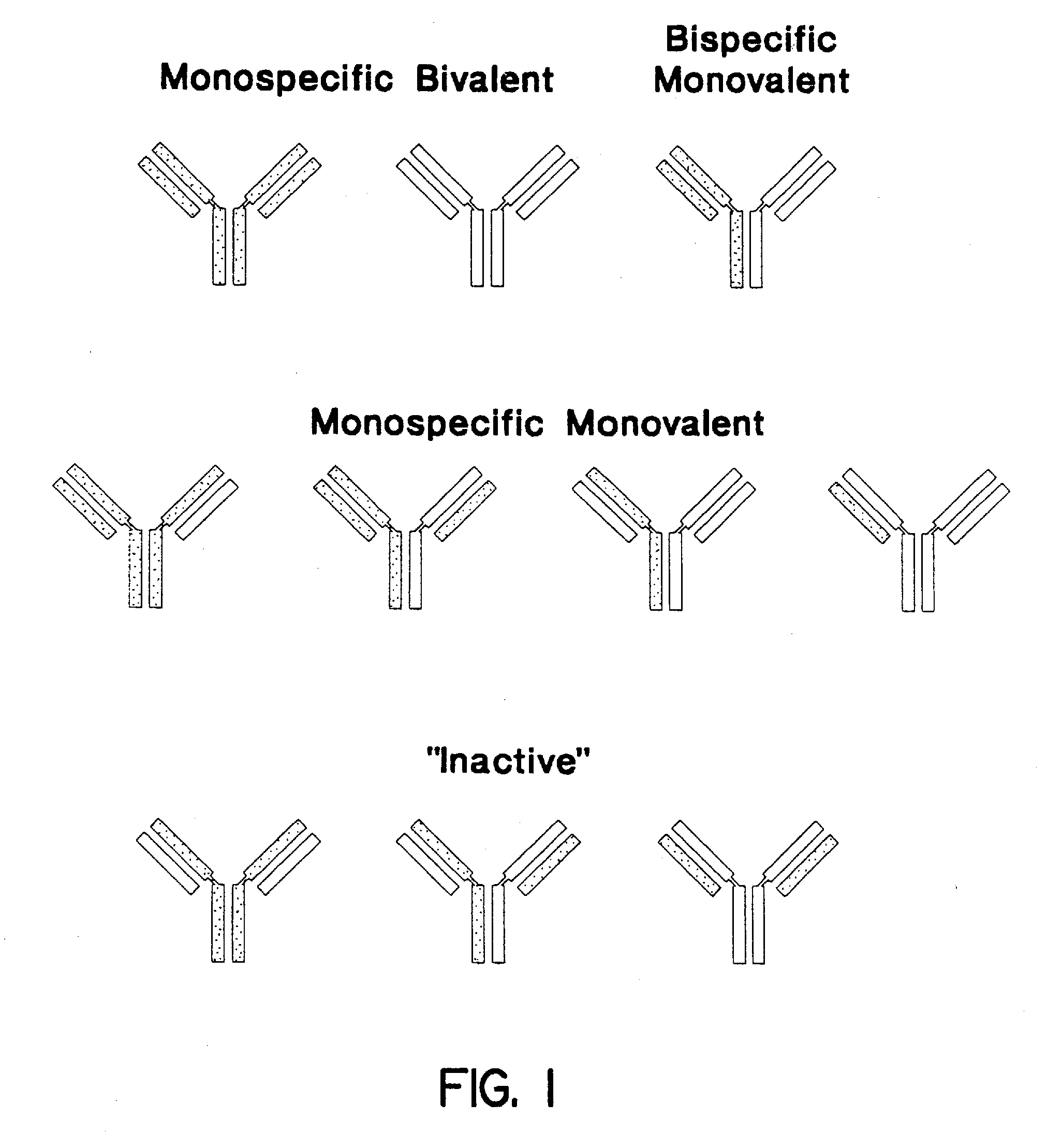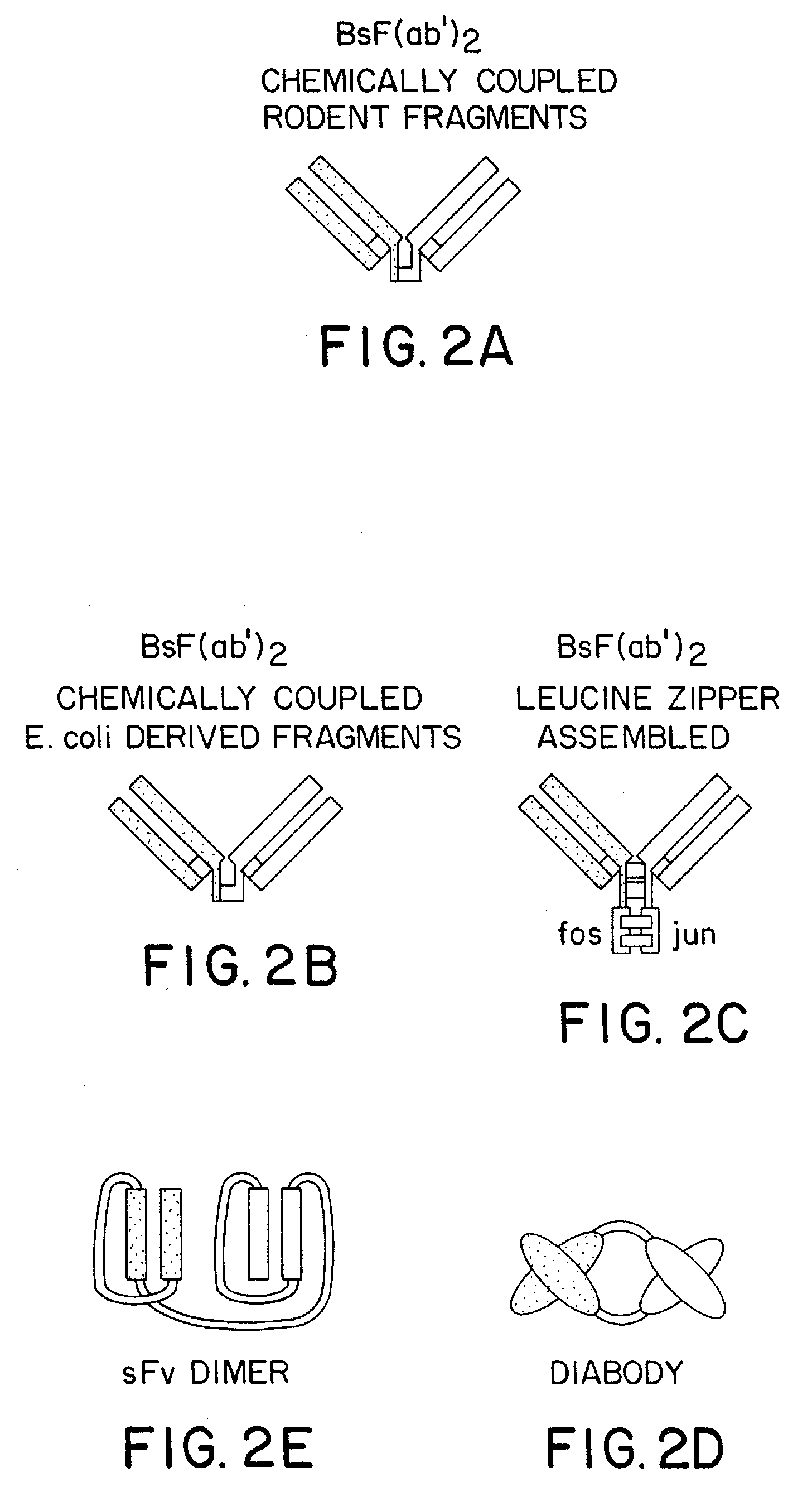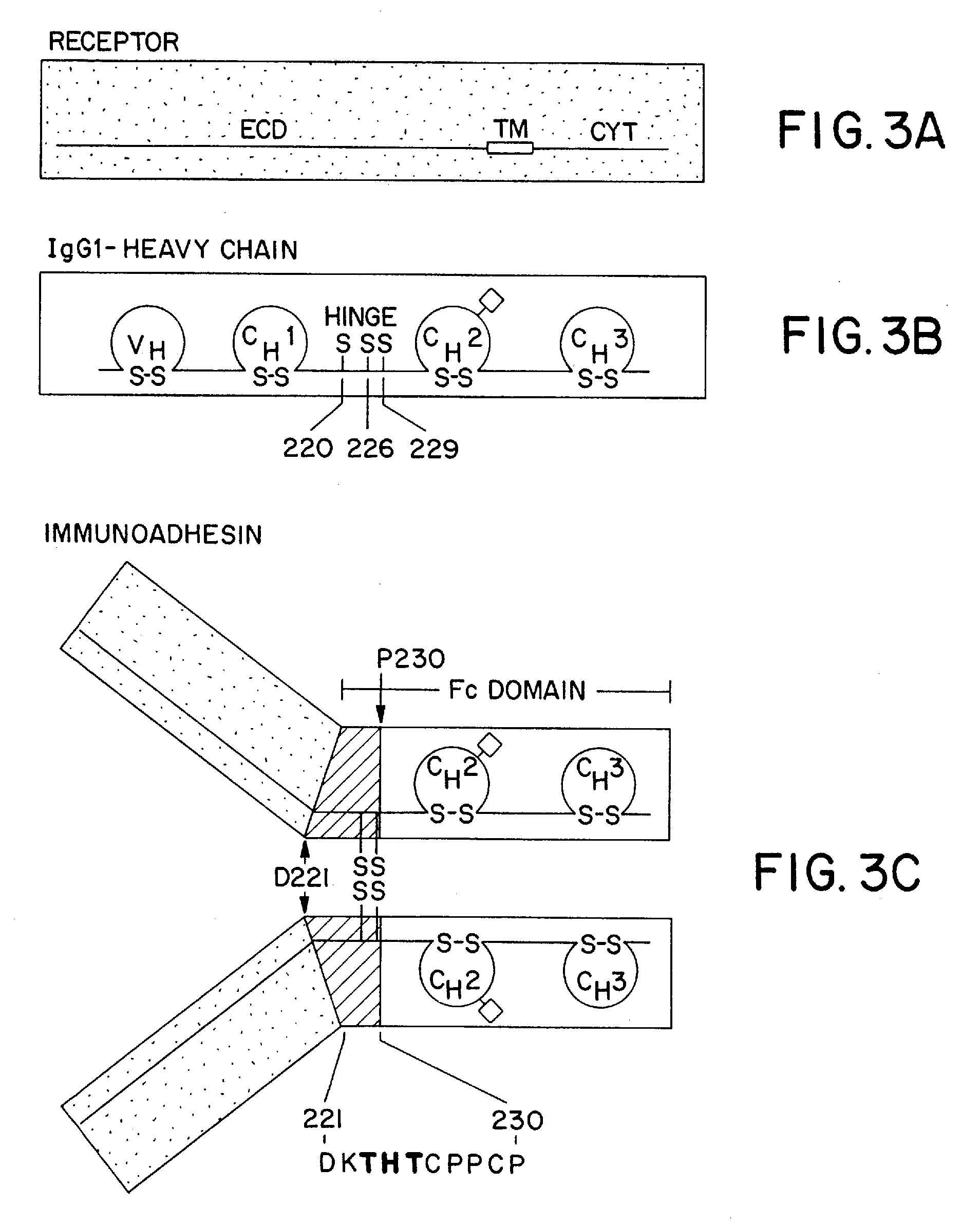Method for making heteromultimeric polypeptides
a polypeptide and polypeptide technology, applied in the field of making heteromultimeric polypeptides, can solve the problems of low product yield, difficulty in obtaining bsabs in sufficient quantity, effective stymie of bsabs, etc., and achieve the effect of increasing the yield of heteromultimer
- Summary
- Abstract
- Description
- Claims
- Application Information
AI Technical Summary
Benefits of technology
Problems solved by technology
Method used
Image
Examples
examples
[0186] The CH3 interface between the humanized anti-CD3 / CD4-IgG chimera previously described by Chamow et al. J. Immunol. 153:4268 (1994) was engineered to maximize the percentage of heteromultimers which could be recovered. Protuberance-into-cavity and wild-type CH3 variants were compared in their ability to direct the formation of a humanized antibody-immunoadhesin chimera (Ab / Ia) anti-CD3 / CD4-IgG.
[0187] Thus, mutations were constructed in the CH3 domain of the humanized anti-CD3 antibody heavy chain and in CD4-IgG by site-directed mutagenesis using mismatched oligonucleotides (Kunkel et al., Methods Enzymol. 154: 367 [1987] and P. Carter, in Mutagenesis: a Practical Approach, M. J. McPherson, Ed., IRL Press, Oxford, UK, pp. 1-25 [1991]) and verified by dideoxynucleotide sequencing (Sanger et al., Proc. Natl. Acad. Sci. USA 74: 5463 [1977]). See Table 4 below and FIG. 7 herein.
TABLE 4CH3 of anti-CD3CH3 of CD4-IgGMost Preferred MutantsT366YY407TT366WY407AF405AT394WY407TT366YT366...
PUM
| Property | Measurement | Unit |
|---|---|---|
| Volume | aaaaa | aaaaa |
| Pharmaceutically acceptable | aaaaa | aaaaa |
Abstract
Description
Claims
Application Information
 Login to View More
Login to View More - R&D
- Intellectual Property
- Life Sciences
- Materials
- Tech Scout
- Unparalleled Data Quality
- Higher Quality Content
- 60% Fewer Hallucinations
Browse by: Latest US Patents, China's latest patents, Technical Efficacy Thesaurus, Application Domain, Technology Topic, Popular Technical Reports.
© 2025 PatSnap. All rights reserved.Legal|Privacy policy|Modern Slavery Act Transparency Statement|Sitemap|About US| Contact US: help@patsnap.com



